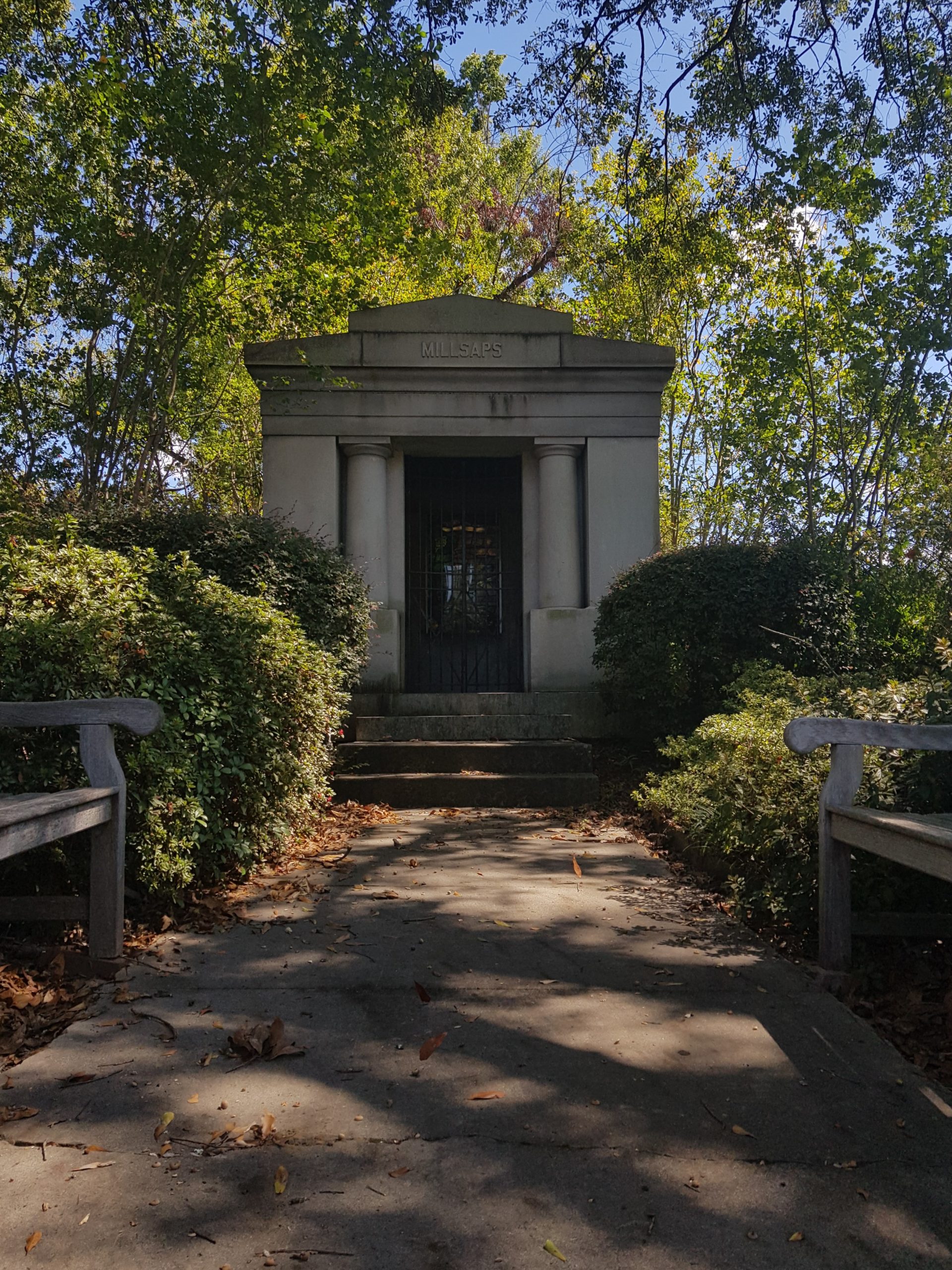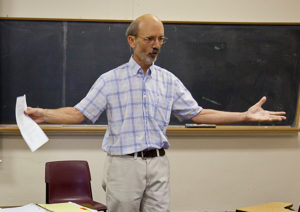Enshrouded in the shrubbery and shade between the Christian Center and Murrah Hall lies an often-overlooked structure – the tomb of Major Millsaps and his wife, Mary. The concrete columns stand guard, with an iron gate preventing unwanted trespassers. In the back, sunlight reveals a landscape of purple and pink sunset surrounded by greenery captured in stained glass, a striking dose of color amidst the dark interior.
Reuben Webster Millsaps was one of three primary founders for the college. He passed away in 1916 – 8 years after Mary died in 1908.
According to the Millsaps website, the College Board of Trustees allowed for his internment on campus, with a resolution commenting that the College Board “shall count it a sacred and priceless privilege to have the bodies of our generous benefactor and his beloved wife to repose on the beautiful campus of our college which was so dear to the heart of our glorified co-worker and into which he put so much of the best energies of his life, thus consecrating it and giving us the opportunity to care for the tomb in which they shall sleep.”
And it is on campus ground Millsaps and his wife have remained, despite prevalent gossip. An unsupported story from the 1950s says that the theft of Millsaps’ body by Mississippi College fueled an already intense rivalry at the time, and another unsubstantiated rumor exists that Millsaps and Mary have been relocated to a family cemetery elsewhere. Presently, both remain in the very heart of campus.
It is important to note that the values and life of Major Millsaps had led to tension and disagreements in recent years when considering current values of the college. The centrality of his tomb remains a point of interest among Millsaps students and faculty.
“You can definitely feel the vibes of Major Millsaps and his wife’s presence when you walk by their tomb on a fall day,” said Priya Patel, a senior Millsaps student.
Millsaps designed the tomb himself, suggesting that he intended to be buried on campus at least a few years before his passing. The now defunct Albert Weiblen Marble and Granite Company, based in New Orleans, was commissioned for the project. The small but formidable structure has now stood for over 100 years.
Landon Wimberly, another senior Millsaps student, commented: “I work as a presidential ambassador on campus. I give tours and pass that section, I pitch the sweet story of how major Millsaps and his wife couldn’t have kids and see the students of the college as their children. I then proceed to say that it’s a little weird in my opinion but it’s just something that adds to the Millsaps campus. A tad creepy but definitely adds some sort of character when giving tours.”
After all, it is not every campus that features the mausoleum of its founder on campus.
Major Millsaps was also the college’s mascot, until it was agreed in 2015 to ‘retire’ the Major from that role. However, there is currently no other mascot that has officially taken his place.
What do you think of the Major’s Tomb being featured on campus?

